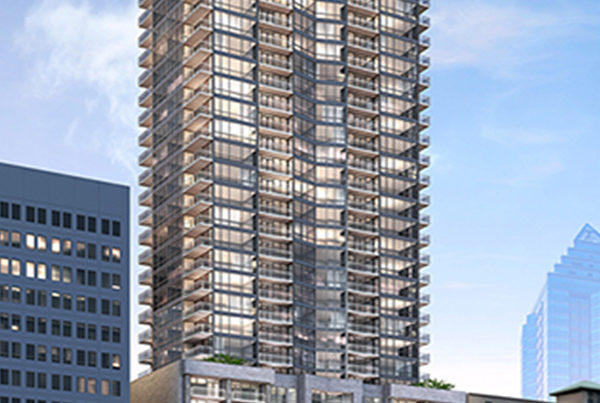One of the most common complaints with high-rise drainage systems is the noise of the drainage pipework, both in residential buildings with a high density of people, and in premium hotels that strive to meet customer expectations for peace and quiet.
A building is interconnected by the branch and stack pipes. If a speaker were to be placed onto the pipe it would be heard throughout the entire building through the pipe network. Sound is a sinusoidal wave travelling in the pipework at the acoustic velocity of 320m/s. In a 50-storey building the sound would travel from the base to the top of the stack in under 0.5 seconds. The sound would be subject to frictional losses and its amplitude would reduce but it would still be heard throughout the stack.
Waste water will travel down the stack between 3-6 m/s, elements containing solids such as macerated toilet paper and faeces will fall at 8-10 m/s, with solids falling at 15 m/s. The solids will fall in the centre of the stack and the macerated waste will fall both in the centre of the pipe and on the side of the pipe. Water will be annular and stick to the pipe walls.
Airborne noise – Originates from the inside of the pipe network and is generated by waste water flowing inside. Airborne noise should be kept as much as possible inside the pipe which can be achieved by a high-density acoustic soil and waste system that limits propagation by mass. This is accomplished by using a special material formula incorporated in a three-layer pipe structure.
Structure-borne noise – Originates from vibrations of the pipes and fittings and the pipe support system that acts as an acoustic bridge to the building’s structure. Vibrations originate from the waste water that flows inside the pipe system and causes acoustic resonance. The resonance is transmitted through a system of pipe clamps to the building’s structure. Structural noise will transmit in multiple neighbouring rooms as the building structure is uninterrupted. It is therefore important to design the system of fixing pipes and fittings to the building’s structure in such a way that the transmission of the acoustic resonance to its walls is reduced to the minimum.
The waste will fall at terminal velocity, which is reached in one floor (maximum speed). So in a 50-floor building, the waste will travel at the same speed as in a 5-floor building. But since taller buildings have higher flowrates, noise generated in the system is far greater than in a low-rise building, and any discharge at any time can be heard throughout the system. Also, it’s important to note that the noise generated in the vertical stacks will also transition into the branch pipe network, so acoustic pipes and clips must be used on the branches as well as on the stacks to reduce the noise.
This underscores the importance of correct design, using acoustic pipes with the associated clips, limiting the offsets and having swept radius bends to help reduce the noise generated within the pipes. By managing the transient pressures in the system, single stack solutions help to reduce noise and vibration in high-rise building drainage systems. (See single stack with stack- aerators and P.A.P.A. system).



